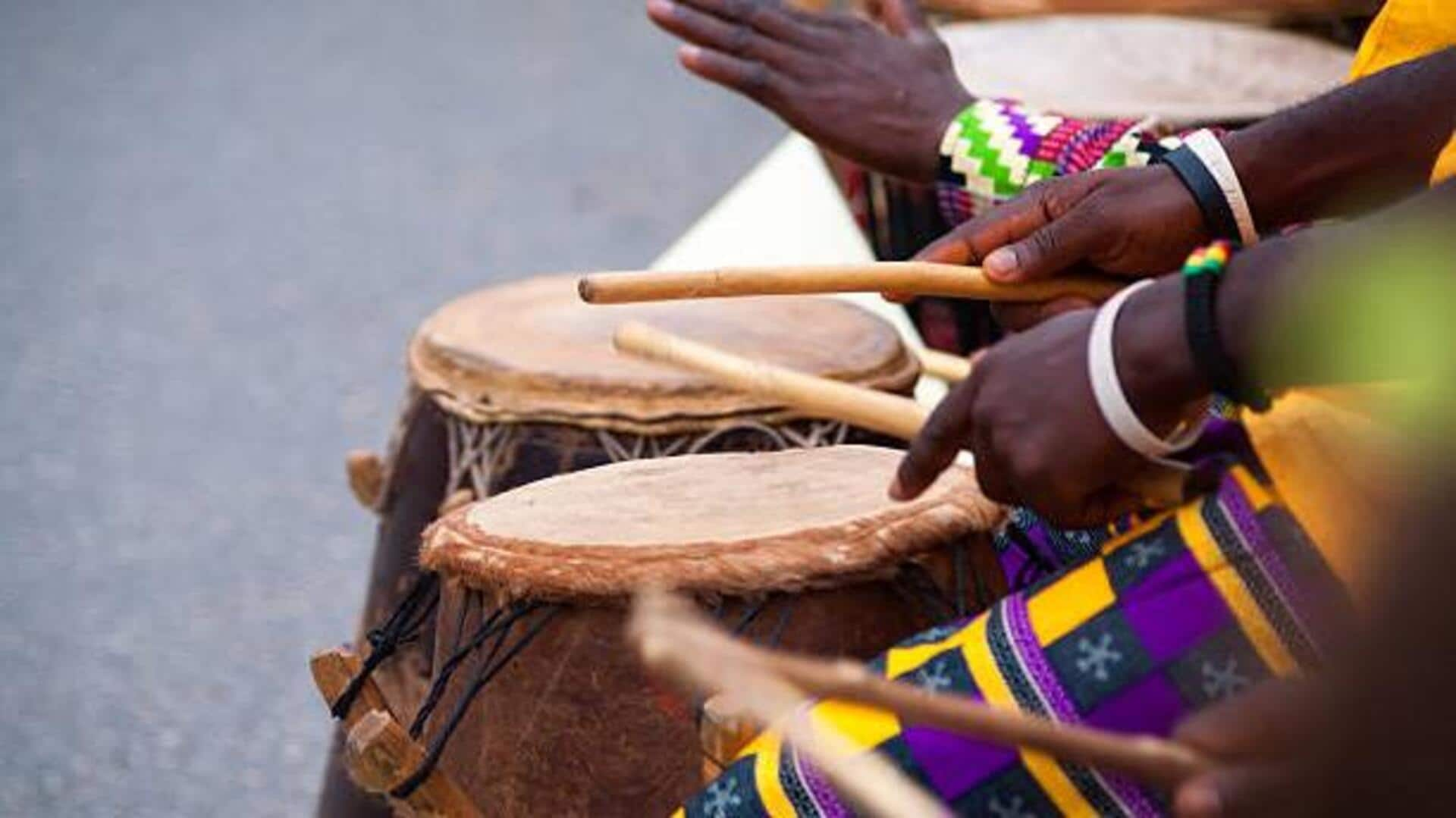
These folk instruments are worth exploring!
What's the story
African folk instruments form an integral part of the continent's vibrant cultural tapestry. Made from natural materials, these instruments have been employed for centuries to make music that tells the stories of the diverse traditions of the African people. From drums to stringed instruments, every piece has its own place in the music scene. They reveal the history and social fabric of different parts of Africa.
#1
The djembe: A drum with a voice
The djembe is Africa's most iconic percussion instrument. It originated in West Africa and is traditionally carved out of a single piece of wood and topped with animal skin. Not only does the djembe have a wide range of tones, it is also commonly used in ceremonies and communal gatherings. Its ability to produce deep bass sounds and sharp slaps makes it versatile for different musical styles.
#2
Kora: The harp-lute hybrid
The kora is a harp-lute stringed instrument. It has 21 fishing line or nylon strings stretched over a large cowhide-covered calabash resonator. Played by griots or the traditional storytellers of West Africa, the kora accompanies oral histories passed down through generations. Its melodic sound adds depth to narratives shared within communities.
#3
Mbira: The thumb piano's melodic chimes
The mbira, or thumb piano, hails from Southern Africa. It features metal tines affixed to a wooden board which are plucked with thumbs to create sound. Commonly played at spiritual ceremonies or social gatherings such as weddings, its gentle melodies are said to bring people closer to ancestral spirits while promoting camaraderie among guests.
#4
Balafon: An ancient xylophone tradition
Similar to a xylophone, the balafon has been an African tradition since 12th century AD. Emerging in the Mali Empire under Sundiata Keita, it was performed at the courts' gatherings. Its popularity continues, due to artists touring internationally and sharing their culture, keeping it alive in global music scenes today.